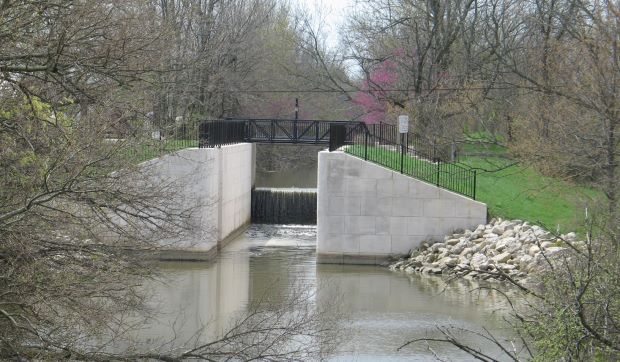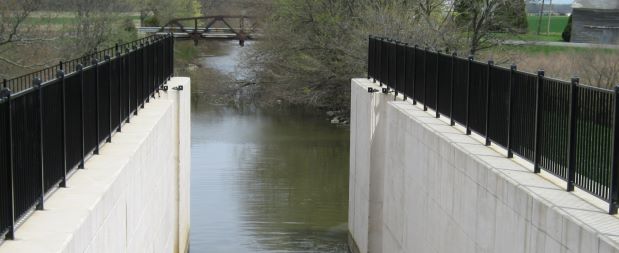

Ironically, canal boats carried much of the iron ore used to build the area railroads. Canal transportation remained cheaper; however, the speed of the railroad lured business. In the 1860's Toledo and Cincinnati diverted the ends of the Miami and Erie Canal to other uses. The remaining canal was leased to a private company which led to it's deterioration.
By the late 19th Century, some local operators remained successful by refitting boats into recreational passenger vessels. At the beginning of the 1900's, an effort was made to replace the ageing wooden locks with ones made of concrete. Lock 14 was one such upgrade in 1905.
At one time, Lock 14 was the site of a community with a church, a gate keeper's house, a store, lumberyard, an icehouse, and various homes.46
In 2002 Lock 14 was upgraded; the concrete was resurfaced; railings were added; landscaped; and a paved parking lot was added.
